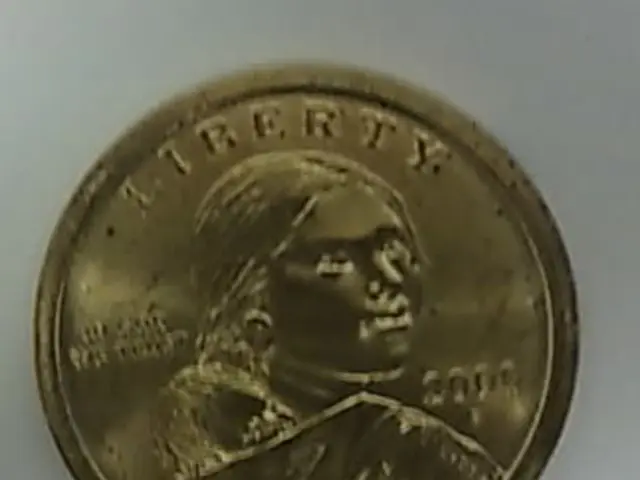All Talk, Few Results: A Look at Trump's Talks with Putin and the Ukraine War
- Trump's Progress with Putin Advancing Gradually - Key Points:
Once again, President Donald Trump picked up the phone to chat with Russian President Vladimir Putin. Expectations were sky-high, but reality didn't quite meet them. Here are five key takeaways:
1) Caught Short
The much-anticipated call didn't deliver the instant 30-day truce Trump had hoped for. Instead, we've got a baby step: Russia will nix attacks on Ukrainian energy facilities for 30 days if Ukraine responds kindly. Putin announced his troops to halt hostilities, while Trump declared the truce effective immediately. Nothing yet from the Ukrainian front.
Though this move falls a bit flat compared to the initial peace proposal, it could still offer relief to both sides. Russia's air assaults have wreaked havoc on Ukraine's energy infrastructure, while Ukraine's recent drone incursions threatened Russian oil refineries.
2) Putin Standing Tall
As always, Putin put forth his familiar arguments against an all-out truce, claiming it'd be tricky to keep the peace along the entire battle line. The Kremlin also proposed two conditions: no more Western weapons or intel for Ukraine, and no military reinforcements or arms resupply for Ukraine. Funny thing, those conditions don't seem to apply to Russia.
And Russia remains resolute in its demands for a final peace agreement, including security guarantees (like barring Ukraine from NATO) and resolving the factors fueling the conflict. Moscow accuses Ukraine of discriminating against the Russian-speaking population and promoting extremism, implying they want a say in Ukraine's governance.
3) Ukraine's Role in Peace is Misjudged
Trump has accused Ukrainian President Volodymyr Zelensky of being ungracious and shying away from peace efforts. He even put the clamps on Ukraine's access to U.S. intel and weapons. Then, Ukraine agreed to Trump's proposed ceasefire, proving they're not the mountain that cannot be climbed. But now, the ceasefire is up in smoke, with Russia laying down the conditions. Ukraine worries they might be asked to cede territory, but that topic has been mum in the Kremlin and White House statements.
4) Trump Stuck in Slow Motion
Trump kicked off negotiations with big ambitions, gunning for an end to the invasion within a day. Well, that haven't panned out. Now, Trump himself is backing away from those statements, claiming they were a bit ironic. His mission now is to end the war promptly and condescend to Ukraine while billing himself as a peacemaker.
Trump's powwow with Putin didn't produce the breakthrough he hoped for. Despite Trump's recent appeasement gestures to the Kremlin leader, he only managed to extract a temporary truce. While many view this as a successful start, the question remains whether he can finish the peace race anytime soon.
5) Europe: Step Up and Take a Seat
The big boys—the world's nuclear powers—shared a chat sans Ukraine or European states. This week, European leaders are gearing up to beef up Ukraine's defense and their own safety. Talks are underway for a European military mission in Ukraine to school the army and act as a shield against Russian attacks. But the exact timeline for deployment is hazy, and it's unclear whether the soldiers will show up with or without Russia's permission. Time's on our side—before Trump and Putin pull off another unilateral stunt.
Additional Insights:
- The dialogue between Trump and Putin focuses on tentative steps towards peace and ongoing relations between the U.S. and Russia. Skepticism about the feasibility of Trump's peace plan persists among European leaders, particularly regarding Ukraine's central involvement in the negotiations [2].
- Ceasefire implementation poses a challenge due to issues related to control along the conflict lines, and concerns about the cessation of foreign military aid to Ukraine [1]. Putin advocates for a complete halt to foreign aid as a condition for ending the conflict, a stance unlikely to be accepted by Ukraine and its allies.
- The European Union, understanding the complexity of the Ukraine war, is committing to developing elements of a common foreign and security policy to support the ongoing peace talks, possibly including the supply of military aid and intelligence to Ukraine.
- Despite Russia's agreement to a temporary ceasefire, President Putin has continuously expressed reservations about a lasting truce, proposing conditions like an end to foreign military aid and intelligence to Ukraine and no military reinforcements or arms resupply for Ukraine, a stance that the European Union might consider when deciding whether to provide assistance.
- In light of President Trump's struggle to secure a comprehensive truce with Putin, leaders of the European Union are expected to take a more active role in the peace negotiations, potentially deploying a European military mission to Ukraine to train its army and act as a shield against Russian attacks, thus backing Ukraine's position and contributing to a lasting ceasefire.



